Alchemist Simulation Batch Distribution
Distributed Systems project
Kelvin Oluwada Milare Obuneme Olaiya
Introduction
Alchemist
- Is a chemical-oriented general-purpose simulator
- Open source
Alchemist’s meta-model
Introduction
Alchemist
- To run one simulation one should:
- Write a simulation configuration file in YAML
- Launch the simulator
- Wait for the completion
- Possibly analyze any exported data
The problem
- Sometimes it may be useful to execute the same configuration with different parameters, called variables.
- The set of simulation differing by their variables constitute a batch.
- Alchemist provides a way to launch a simulation batch sequentially.
The problem
The need of distribution
Taking advantage of multiple computing resources can be a way to reduce the time necessary to complete the execution of a simulation batch.
Functional requirements
- It should be possible to create a cluster of nodes, each executing a service exposing Alchemist.
- Alchemist should provide a way to distribute a batch of simulations to be executed by one or more nodes on a cluster.
- Each node of a cluster must be up and ready to receive and execute configurations of simulations.
- None of the distributed simulations should get lost, meaning that in case of a node failure, a recovery mechanism should redistribute the simulations assigned to the failing node.
- Once a simulation is computed by a node, results should be made available to the user who launched the distribution.
Design
Architecture

Main actors:
- AlchemistClient: Loads and distributes a simulation batch.
- AlchemistServer: Waits for job orders (mainly simulations) to execute.
- Registry: management of all the information that guarantees the correct functioning of the system
- Message Broker: responsible for the communication between nodes in the cluster.
Domain structure:
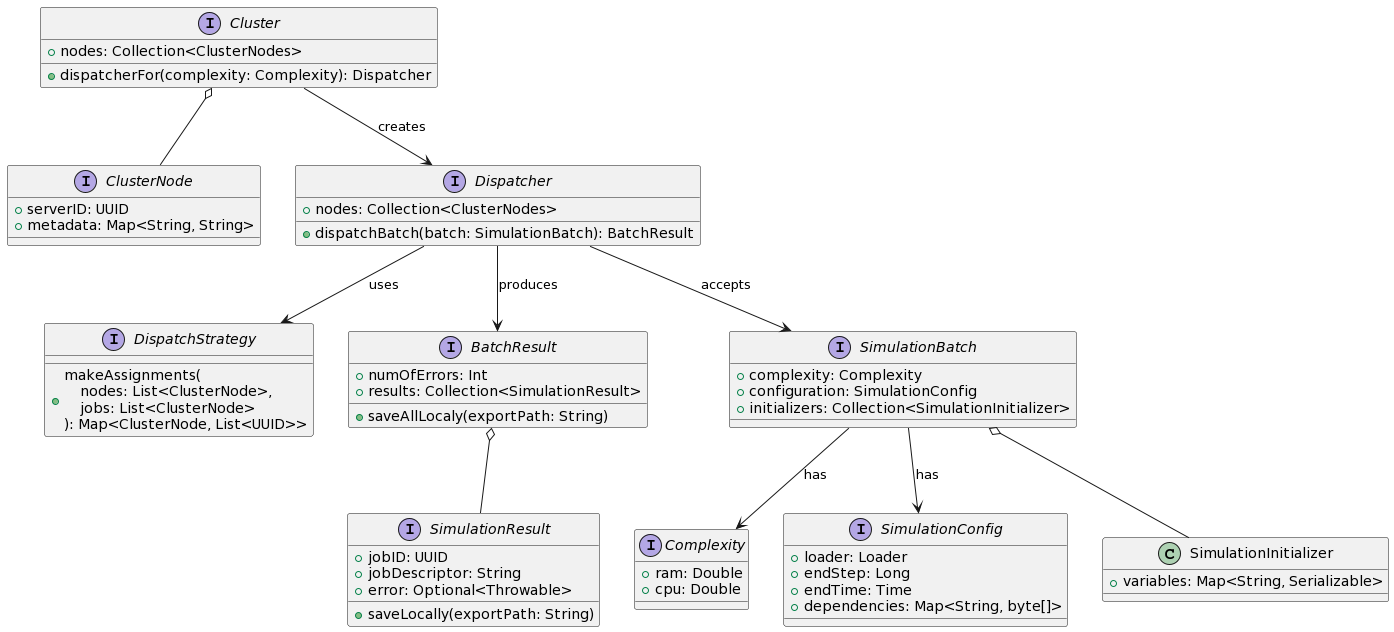
Domain structure (1/3)
-
Cluster is an entity representing the collection of nodes that are currently connected forming a cluster. Through the cluster it is possible to obtain a Dispatcher, specifying the complexity that the nodes in the dispatcher should be able to handle.
-
ClusterNode represent a server node to which jobs can be distributed.
-
Dispatcher contains a subset of the nodes in the cluster. It is responsible for accepting SimulationBatches and distribute them across subset of nodes. Distribution is made according to a DispatchStrategy
-
DispatchStrategy it models the strategy with which the work load gets distributed to a collection of nodes (e.g. round-robin).
Domain structure (2/3)
-
Complexity describes the complexity in terms of ram usage and memory occupation for the simulations in a batch.
-
SimulationBatch represents a simulation batch with its complexity. It is composed of a simulation configuration and a collection of simulation initializers.
-
SimulationConfig contains the general batch information such as the end step and end time of the simulations and a loader from which simulation instances will be created. Dependencies are files that must be made available to all servers in order to execute the simulation correctly.
Domain structure (3/3)
-
SimulationInitializer contains a combination of variables values that will be used to create a simulation instance. For every simulation initializer in a simulation batch corresponds a job for a node in the cluster.
-
BatchResult models the result of a simulation batch that have been submitted via a Dispatcher. It gives information on the total number of errors, if any, that have occurred while executing the simulation batch and a utility method to save all the distributed export files locally.
-
SimulationResult models the result of a single job.
Main Interactions
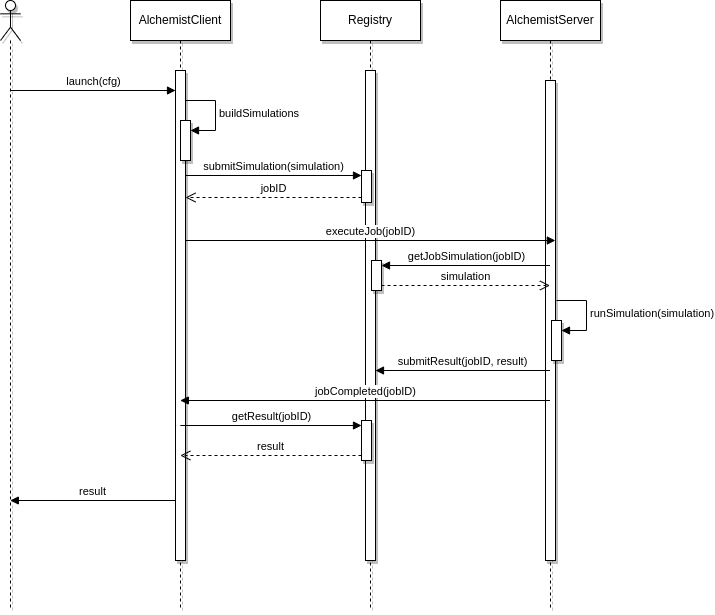
Simulation distribution
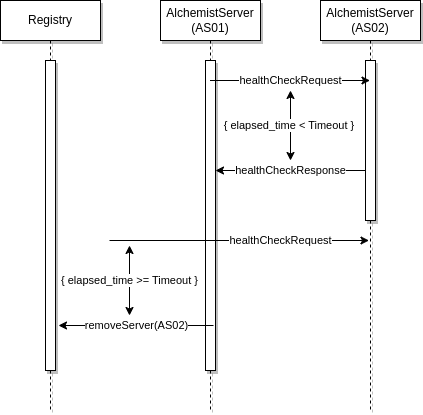
Fault detector
Behavior

Alchemist server
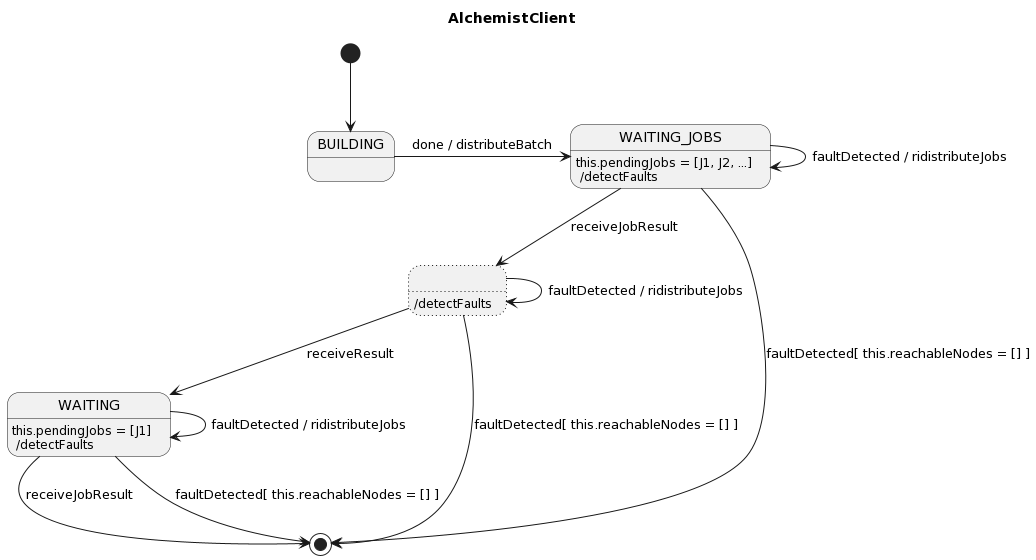
Alchemist client
Implementation details
Technologies
- Etcd: a distributed, reliable and strongly consistent key-value store. It has been used to store the most important data for the functioning of the system (The registry)
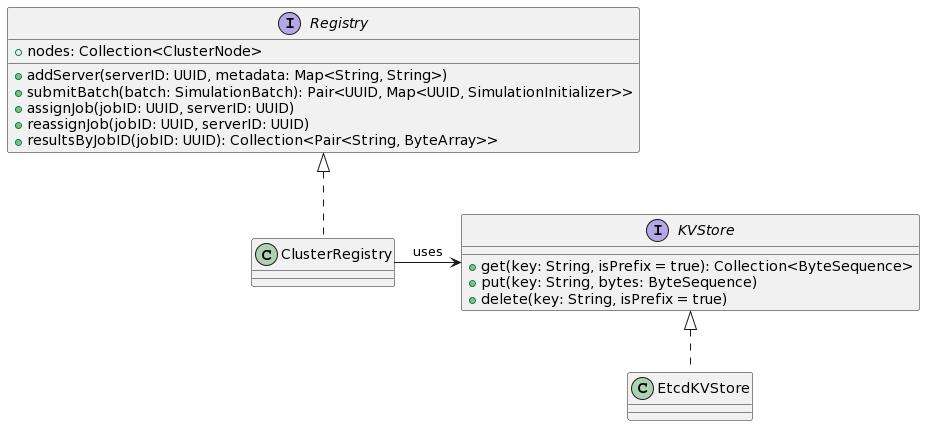
Implementation details
Technologies
- RabbitMQ: an open-source message broker based on the Advanced Message Queuing Protocol (AMQP) for reliable communication.
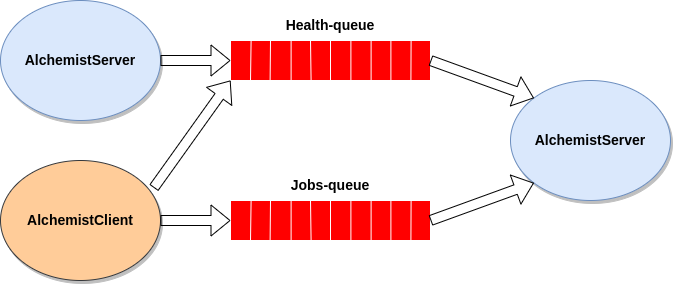
Implementation details
Technologies
- Protobuf: Protocol Buffers are a language-neutral, platform-neutral extensible mechanism for serializing structured data.
message Simulation {
string simulationID = 1;
bytes environment = 2;
bytes exports = 3;
string jobDescriptor = 4;
}
Testing
- A series of test have been written to assess whether the system complies with the project requirements.
- Main challenges (as with distributed systems in general): dealing with asynchronous behavior and non-determinism.
- For this the Kotest testing framework came in handy.
Testing
A test example:
"Simulation are correctly distributed" {
startServers(serverConfigFile, SERVERS_TO_LAUNCH).use {
val cluster = ClusterImpl(registry)
awaitServerJoin(cluster, SERVERS_TO_LAUNCH, 10.seconds)
startClient(clientConfigFile).use {
until(20.seconds) {
registry.simulations().size == 1
}
val simulationID = registry.simulations().first()
registry.simulationJobs(simulationID) shouldHaveSize SIMULATION_BATCH_SIZE
}
}
}
Kotest functions for non-determinism:
eventuallycontinuallyuntil
Future works
- Implementation of a cluster monitoring & management dashboard
- Improvement on the fault detection routine
- New dispacth strategies based also on the heterogeneity of the computing nodes and the complexity of a simulation batch